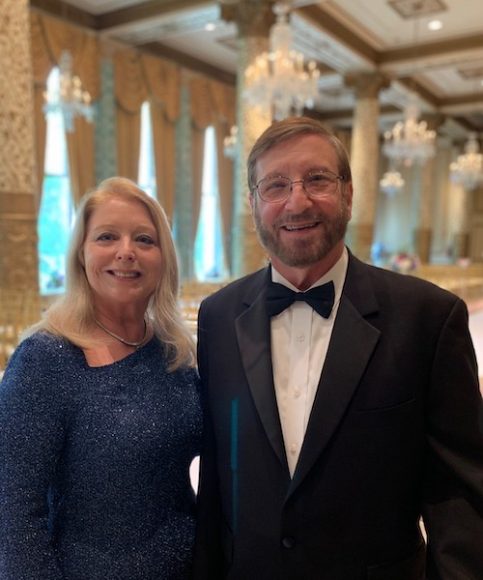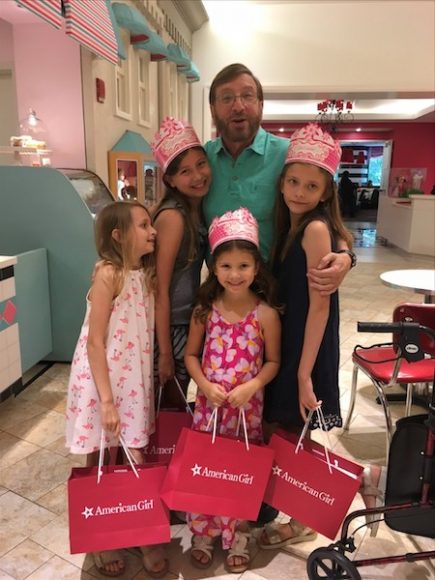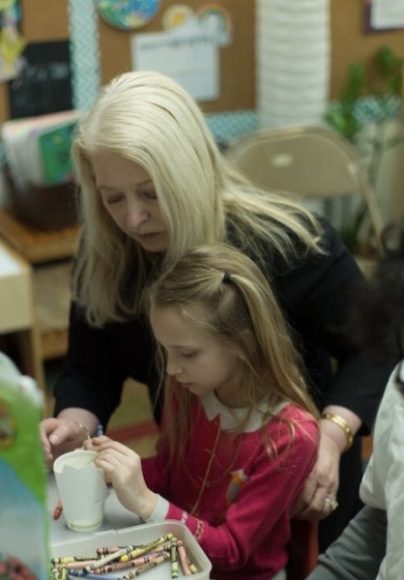When we interviewed Robert and Sherlita Amler, both M.D.s, in 2014, the Ebola virus was on the couple’s – and everyone else’s – mind.
Today, we wish we had only that experience to contend with. The 2014 Ebola virus outbreak resulted in 11 cases in the United States, with two deaths. As of press time in October, there have been 9.2 million cases of the novel coronavirus (SARS-CoV-2), which causes Covid-19, and 230,383 deaths in the United States. With 4% of the world’s population, the U.S. has more than 20% of its deaths.
The coronavirus is not only the story of 2020, “it will be the story of this century,” says Sherlita, commissioner of health for Westchester County.
She has, as her husband notes, been on the frontlines of the battle in Westchester since Feb. 2 when President Donald J. Trump placed travel restrictions on flights to and from China, where the virus originated, and later that month on Iran, then a hotspot. The restrictions, however, allowed Americans who had traveled to China within the last two weeks of January to return to the U.S. Non-U.S. citizens with immediate family here as well as permanent residents who had been to China in those weeks were similarly exempted. Soon, Sherlita was working on quarantining, housing and testing some of these individuals, ramping up PPE (personal protective equipment) for health care workers and contending with only the second case of the virus in New York, which occurred in March in New Rochelle.
“The numbers snowballed,” she recalls. “How do you isolate patients? How do you test? We were trying to keep people as safe as we could and prevent exposure. And we’ve been largely successful.”
With a population of 967,506, Westchester has had 40.202 coronavirus cases resulting in 1,461 deaths. The infection rate is below 2%. (With a population of 943,332, neighboring Fairfield County has had 23,090 cases of the virus and 1,433 deaths. The infection rate is a little more than 1%.)
“All the counties through the region are tied together,” says Robert, who has had a complementary role in the virus as vice president, dean and professor at New York Medical College in Valhalla. As such, the questions for him have been “how do you send medical students and dental students into rooms with patients with Covid? How do you keep them aware? The answers are exquisite attention to detail and not just education but training. This is how you wear a mask. This is how you put on a face shield and take it off. This is true of HIV and staph infections. You do it in a supervised setting. It’s like learning to drive.”
Robert credits “the world-class faculty” of the medical college and the affiliated Touro College of Dental Medicine with helping the students prepare.
He and Sherlita are complements personally as well as professionally. He is an ebullient New Yorker, with a shout-out to The Bronx High School of Science, an alma mater along with Dartmouth College, who immediately puts us at our ease by noticing our backdrop of bookshelves, de rigueur for Zoom meetings nowadays, and relating the story of a friend whose shelves brimmed with books from the library that still bore Dewey Decimal Call System numbers and letters. (The friend forgot to return some but bought others.) Sherlita is more reserved but no less articulate, a skill honed, she told us in 2014, by a life on the move with her military family.
The two share a great deal, not the least of which is a blended family of six children with eight grandchildren. Both are pediatricians by training. And both have had distinguished careers in both public and private service. Robert, who joined New York Medical College in 2005, serves as dean of its School of Health Sciences and Practice and Institute of Public Health and vice president for government affairs. He is also professor of public health, pediatrics and environmental health science. Previously, he was regional health administrator and regional commanding officer of emergency response for the U.S. Department of Health and Human Services; a commissioned officer in the U.S. Public Health Service, on active duty; and chief medical officer at the Centers for Disease Control’s Agency for Toxic Substances and Disease Registry.
Sherlita is now in her ninth year as commissioner of health for Westchester. Prior to that, Sherlita was Putnam County’s commissioner of health from 2004 until 2011 and a medical officer at the Centers for Disease Control and Prevention and the Agency for Toxic Substances and Diseases Registry in Atlanta. She is also a clinical associate professor of pediatrics at New York Medical College and a distinguished lecturer and senior fellow at the Center for Disaster Medicine at the school.
In their years of public service, they have worked for both Democratic and Republican administrations. Asked about Trump’s handling of the virus — which many rate as ranging from a mixed bag to a disaster — the Amlers mostly deflect, with Robert noting that there is always an element of politics in public health.
“The biggest problem in public health is messaging,” Sherlita says. You have to put yourself in other people’s places, she adds, to find the message that will convey health risks and disease prevention to them.
This has been particularly challenging with the coronavirus, a new, highly contagious disease for which there is no cure, yet, and for which some are asymptomatic.
When it comes to the virus, Robert says, “there’s a missing page in the manual.” New information is being added all the time, which compounds the frustration. At first masks were thought to be ineffective. Now they are one of the most important weapons — along with social distancing, limiting exposure to large groups and hand washing — that the public has in its arsenal in preventing the illness, Sherlita says.
Still, there are those who see no reason to arm themselves. “We’re all human beings,” Robert says, “and we’re all guilty of being human beings” — which means being optimistic about our chances of avoiding or surviving the virus. And if you don’t know anyone who’s been affected by it, then you might not think it’s as big of a deal.
The Amlers are optimistic about the virus, though not falsely so. Robert notes the elimination of smallpox, the containment of polio and the eradication — almost — of the measles. Even HIV-AIDS, he adds, has become a chronic disease and not the automatic death sentence it was in the 1980s when it was first widely reported. These bode well for effective treatment for the coronavirus. Meanwhile, he says, the race to the top is well on for preventive vaccines. There are 36 in phase I of clinical trials, 14 in phase 2, 11 in phase 3 and six approved for early or limited use, according to The New York Times’ Coronavirus Vaccine Tracker.
“You never appreciate public health until you need it,” Sherlita says. But it is capable of great achievements. She points to John Snow, M.D., one of the fathers of modern epidemiology, who was able to locate the source of an 1854 cholera outbreak in London to a water pump, thus proving the disease was water- and not air-borne and quelling an epidemic. There’s no telling what more we will learn about the coronavirus.
In the meantime, the way to prevent a second wave here is “to have people take it seriously,” she says. “We must stay on course.”







